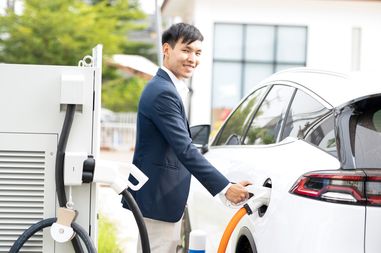The Chinese ambitions in Europe: how the old balance is changing

The decades-long EV development of China has unleashed itself in Europe in recent years, growing through remarkable acquisitions and huge investments as the two sides are eager to reach their zero-emission goals.
If 2021 was the global awakening year for the EV industry, with China grabbing 53% of the global market share, 2022 figures suggest a consolidation of China’s leading role increasing the gap on Europe and US.
The Chinese all-electric storm
The Chinese EV storm, led by BYD, which has the strong support of the American multinational conglomerate Berkshire Hathaway, reached new heights in 2022:
In 2022, China grabbed 63% of the global new energy passenger vehicle market, NEV shipments in China reached 6,5 million units, showing a remarkable 96,3% jump from 2021, according to the figures from the Passenger Car Association (CPCA) released in January. This is 2.6 times the European and 6.3 times the North American sales, according to Digitimes Asia.
The local retail sales of NEVs increased by 90%, reaching 5,67 million units. BYD, the world's largest EV seller, is far ahead in China too, securing 30% of the local NEV market with 1.87 million in sales.
Forecasts signal a 31% rise in NEV sales in China worldwide in 2023, reaching 8,5 million units. This amount represents 36% of all vehicle shipments in the country.
The Chinese NEV strategy
How China emerged as a strong player in the European EV industry is no surprise. Ironically, one of the main triggers was pollution and the other reason is the remarkable transformation of China from being a mass low-tech products supplier to a high-tech manufacturer.
Interestingly, what may not be of common knowledge is the rapid consolidation of the EV trade ties between Europe and China that reached new heights with the European Union -China Comprehensive Agreement on Investment (CAI) carried forward in 2021. The CAI aims to increase market access mutually and reach sustainability in the Sino-EU relationship, as collaboration in the EV market serves this goal perfectly. The breakthrough in this area may have happened in August 2010, when the Chinese EV manufacturer Geely completed the acquisition of Volvo from Ford. Geely did not stop there, acquiring 9.7% of the stake in Mercedes-Benz for $9 bn dollars in mid-2018.
The old balance has changed
By accessing Volvo's technology, China can now produce EVs even better. The experience they've been through helped them reach high technical know-how in EVs while leaping forward in terms of design.,. One example above all are the looks of the Polestar 2 with its official 635KM range.
The EV market is boiling, and China has a lot to do. According to Reuters, Chinese automakers, led by VW and GM local partner SAIC Motor, plan to invest more than $100 billion over the next decade.
China is opening the gap
Through government-backed incentives, international cooperation and dominance in the EV battery market, China is moving closer to becoming the EV supplier of Europe, strongly influencing the fleet market with a considerable price advantage: a Chinese EV is around €10,000 cheaper than a European EV, according to vehicle supplier company Forvia.
Today, China has become an essential part of the daily global economy through its brands like Huawei, Alibaba and Geely. In the coming years, we will likely witness more fierce competition and swift developments in the EV industry, where both corporate fleets and the end-users – also in Europe - will be the winners. An obvious example, to the delight of corporate fleets, is Tesla’s recent initiative to slash list prices, hopefully, the first symptom of the return of competition, bringing back at least some balance to fleet costs. With TCOs rocketing, wherever balance levers generate from, little matters to fleet managers.